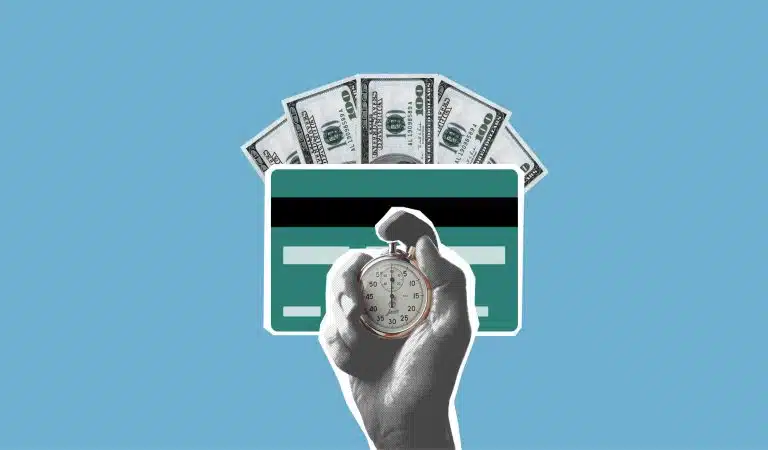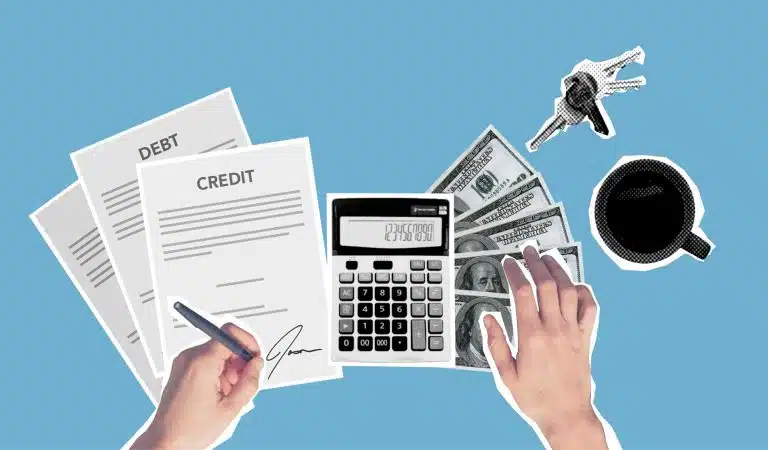Personal loans can seem intimidating if you need to understand the ins and outs fully. However, having good credit empowers you with better financing options when it’s time to borrow. In this guide, we’ll help you identify the best personal loans for good credit, breaking down the top benefits of personal loans for strong creditors, from lower interest rates to access to larger loan amounts.
We’ll also explore the various personal loan types available and how to qualify for the best offers on the market. We’ll then walk you through the simple application process step-by-step.
Thanks to your creditworthiness, you’ll feel confident leveraging personal loans to your advantage and securing the most competitive terms possible.
Know the Minimum Credit Score for Good Credit
Let’s start with the fundamental question: What exactly is a personal loan? Simply put, it’s an unsecured loan that provides a lump sum for consolidating debt, home renovations, and other needs. You agree to repay the fixed amount plus interest charges regularly over a set period of 1-5 years.
With well-established credit in your corner, my goal is to help you make the most of personal loan opportunities.
We’ll also highlight why good credit opens financial doors and reveal insider tips for optimizing your offers. Once you understand the landscape, the process is more manageable than it seems.
Are you ready to explore how personal loans can work hard for you and why your credit reputation matters greatly? Then, let’s dive in! We’ll start by uncovering the major perks that come with demonstrating sound credit behavior over time.
From there, we can strategize to maximize your personal loan eligibility and find the most competitive offers to suit your goals.
Good Credit Borrowers Earns Good Score
Your credit score plays a big role in determining the types of loans you qualify for and the interest rates you’ll receive. Personal loans for individuals with good credit come with some notable perks, thanks to your demonstrated creditworthiness.
We’ll dive deeper into what personal loans are, how good credit can work in your favor, the various loan options available, tips for finding the best deals, and guidance on applying. By the end, you’ll have a thorough understanding of leveraging personal loans when your credit is in good standing.
So What Exactly Are Personal Loans?
A personal loan is a type of unsecured loan designed to fund various needs, such as debt consolidation, home repairs, vacations, and more. With an unsecured personal loan, you borrow a fixed amount of money and agree to repay it in regular installments over a set period, usually ranging from 1 to 5 years. Interest charges are applied to the loan amount throughout the repayment term.
Loan proceeds from a personal loan are typically disbursed directly to your bank account and can be used for various purposes, such as paying off debts or financing projects.
Personal loans differ from secured loans, which require collateral like your home’s equity. No assets are pledged for an unsecured personal loan—lenders evaluate your ability to repay based on credit history and income/expenses.
Personal loans also function differently than credit cards, which revolve monthly without a fixed payoff date. With a personal loan, you know exactly how much you owe and the loan’s expiration upfront.
Benefits of Personal Loans for Good Credit
Having good credit opens the doors to better personal loan deals. But what exactly makes credit reputable in the eyes of lenders? A FICO credit score of 670 or above generally qualifies as “good” based on on-time payments, low credit utilization, and a mix of positive credit history. Here are some key advantages:
Lower Interest Rates
One key benefit of personal loans for good credit is lower interest rates. Lenders view borrowers with a good credit score, usually considered 670 or higher, as lower risks and reward them with better rates.
For example, a $10,000 36-month loan may carry an 8% interest rate for excellent credit vs. 12-18% for fair or poor credit. Lower rates mean paying thousands less in total interest over the life of the loan. Shopping around is wise, but the best offers typically require good credit.
Higher Loan Amounts
In addition to lower rates, having a good credit score opens the door to larger loan amounts. Lenders are willing to lend more money, knowing timely payments are likely. Loan sizes typically range from $1,000 to $100,000, depending on creditworthiness and income verification. Loan funds are disbursed as a lump sum, which can be particularly useful for large expenses such as home improvements.
Borrowers grappling with sky-high totals may consolidate debt more easily with a high-limit personal loan at a lower rate. More favorable terms mean breathing easier financially.
Faster Approval Process
Need funds fast in a pinch? Good credit aids in speedier loan approval. While due diligence is still performed, lenders consider applicants trustworthy and deem credit risk minimal. From application to disbursement, it usually takes one to two weeks with excellent credit history versus a month or more when derogatory marks need deeper analysis.
Some lenders may charge an origination fee, which affects the net loan amount received by the borrower. The ability to access cash quickly makes unforeseen expenses manageable and relieves financial pressure.
Types of Personal Loans for Good Credit
Personal loan options benefit people with good credit standing. Two main varieties are secured vs. unsecured loans and specific-use loans.
Secured vs. Unsecured Loans
Secured loans require collateral, such as a home’s equity, should repayment fail. Unsecured loans involve no assets pledged, only the borrower’s signature and creditworthiness.
Good credit opens doors to both. Unsecured loans tend to carry lower rates since lenders feel the risk is reduced without collateral. Secured loans, on the other hand, may provide even better deals or higher limits, tapping into the property value backing the loan.
Debt Consolidation Loans
As we all know, credit card balances and medical bills add up fast. Consolidating multiple obligations into a single loan frequently saves money compared to paying numerous creditors.
Good credit facilitates lower rates for such consolidation loans and greater savings on interest over the loan’s lifetime. This single monthly payment method simplifies juggling bills and resolves debt quickly. Additionally, personal loans can be used to consolidate high-interest credit card debt, making it easier to manage and pay off.
Home Improvement Loans
Want upgrades but need more cash on hand? With good credit, home improvement loans let property owners finance repairs, renovations, additions, or system replacements like AC and roofing over extended terms. Interest paid may even be tax deductible.
Quality work typically raises home values. When starting big projects, just be sure contractors are licensed, bonded, and insured!
Auto Loans
Whether purchasing a new or used vehicle, auto financing provides flexibility versus cash deals. Rates outdo dealers’ offers when shopping multiple lenders.
Student Loan Refinancing
Refinancing federal or private student debt locks in lower fixed rates to shrink future costs, and flexible terms ease monthly burdens.
The right loan depends on creditworthiness, income stability, loan purpose, and repayment preferences, such as fixed vs. variable rates. Research multiple lenders to pinpoint top contenders for your scenario.
How to Qualify for the Best Loans with Good Credit
Personal loans are competitive, so present your strongest application:
Good credit personal loans are typically unsecured and offer lower interest rates and more favorable terms. Lenders assess applicants based on their credit scores, so having a good credit score can significantly improve your chances of qualifying for the best loans.
Understanding Your Credit Score
Keep tabs on your creditworthiness to qualify for top loan offers. Most financing experts agree that a score above 670–680 represents good standing.
Steps to Improve Your Loan Application
Before shopping, pull your credit reports and check for errors that may drag down your score if unresolved. Compile required documentation, such as tax returns, pay stubs, and bank statements, that lenders need for income/debt verification. Comparing multiple loan estimates exposes the best options.
Pay Bills On Time
Payment history weighs the heaviest. If possible, enroll in auto-pay or pay notice amounts by due dates without exception utilizing online access.
Keep Credit Card Balances Low
Debt balances shouldn’t exceed 30% of credit limits, which indicates fiscal responsibility to lenders. Pay down obligations.
Apply for New Credit Judiciously
Too many applications ding your credit briefly, so open accounts gradually and avoid unnecessary hard inquiries when rate shopping. Spacing them aids your creditworthiness image over the long haul.
With diligent credit maintenance, your odds of getting the best rates on personal loans rise tremendously, thanks to the stability signaled in your credit reports.
Differentiate Fixed and Variable Interest Rates for Personal Loans
Fixed Interest Rates
With a fixed-rate personal loan, the interest rate stays the same for the entire term. So, if your rate is listed as 6% for a 3-year $10,000 loan, you’ll pay 6% interest on the outstanding balance each month for the full 36 months.
A fixed-rate offers predictability and stability since your monthly payments never change. You always know exactly how much you’ll pay in total interest over time, allowing for solid financial planning.
However, if general interest rates drop significantly after you take out your fixed-rate loan, you miss out on potentially getting a lower rate. You’re locked into your original fixed rate for better or worse.
Variable Interest Rates
Variable-rate loans have an interest rate that fluctuates up or down periodically, usually tied to a financial index like the prime rate. Depending on the loan terms, your rate may adjust monthly, quarterly, or annually.
When rates are low, a variable rate could result in smaller monthly payments compared to a fixed rate. But there’s also a risk, as rates could climb and force your payments higher each adjustment period, making your total repayment amount less certain.
Variable rates may appeal to some since you get lower payments while rates are falling. But you have to be comfortable taking the gamble that rates won’t spike too high over your loan term. There’s less long-term predictability than a fixed rate.
Most experts recommend a fixed rate for its stability if you value budgeting security over potentially lower short-term costs. However, variable rates can work if you are okay with adjusting payments, and increasing rates are unlikely in the current climate.
How to Apply for a Personal Loan
With preparations complete, it’s time to research lenders and submit loan applications:
Researching Lenders
Vet lenders online, through ads or word-of-mouth from satisfied customers. Compare interest rates, fees, available loan amounts, and repayment terms from an array of financiers. Reading online reviews provides genuine user experiences to consider.
Submitting Your Application
Most lenders offer online or telephone applications. Be prepared to provide personal details, income source verification like tax returns, current debt load via credit reports, and proof of residency. The process is quite straightforward for good credit scorers.
What to Expect After Applying
For swift credit checks, expect loan decisions within days. If approved, lenders disclose approved amounts and rates. Study the paperwork intricacies before signing, such as confirming payment due dates and late fees. Funds are typically deposited into your bank account within one business week of acceptance.
Explore personal loan options strategically when credit is in good standing. Comparing multiple offers exposes the best terms available. Maintain credit vigilantly to stay eligible for competitive rates and larger loan amounts down the road, too. Personal loans sweeten goal attainment and open financial doors.
Conclusion
Maintaining good credit opens a world of better financing options that aren’t available otherwise. As you’ve learned, personal loans tailored for those with solid credit scores sweeten bigger loan amounts, lower rates, and expedited approvals.
Applying the tips discussed can help qualify you for the best offers while sustaining your stellar reputation. Always weigh your goals, compare multiple lenders, and optimize applications to land the right loan.
Personal loans make achieving dreams, rising above difficulties, and improving cash flow a streamlined reality thanks to demonstrated credit trustworthiness over time.
Now It’s Time to Explore Your Options
Are you ready to take advantage of the perks that come with good credit? Lender Reviews makes finding the best personal loan effortless. Our team has extensively researched the top lending institutions to cut through the clutter for you.
Visit our website to:
- Browse our editor-rated top 3 personal loan providers of 2023
- Compare interest rates, terms, fees, and loan sizes side by side
- Read genuine customer reviews to learn from others’ experiences
- Get a free quote from multiple lenders with one quick form
- Apply directly online and pre-qualify within minutes
With Lender Reviews on your side, unlocking a personal loan tailored to your needs and credit is seamless. Our easy-to-use tools do the legwork so you can focus on your goals. Don’t delay empowering yourself – start streamlining your financial life today.









